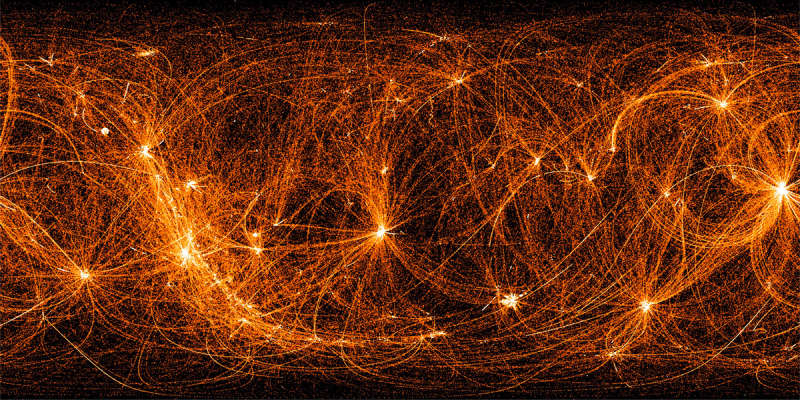NICER at Night

Explanation:
A payload on board the International Space Station, the
Neutron star Interior Composition Explorer
(NICER) twists and turns
to track cosmic sources
of X-rays as the station orbits planet Earth every 93 minutes.
During orbit nighttime,
its X-ray detectors remain on.
So as NICER slews from target to target bright arcs and loops are
traced across this all-sky map made from 22 months of NICER data.
The arcs tend to converge on
prominent bright
spots, pulsars in
the X-ray sky that NICER regularly targets and monitors.
The pulsars are spinning neutron stars that
emit clock-like pulses of X-rays.
Their timing is so precise it can be
used for
navigation, determining spacecraft speed and position.
This NICER X-ray, all-sky, map is composed in coordinates with the
celestial equator
horizontally across the center.
Authors & editors:
Robert Nemiroff
(MTU) &
Jerry Bonnell
(USRA)
NASA Web Site Statements, Warnings,
and Disclaimers
NASA Official: Jay Norris.
Specific
rights apply.
A service of:
LHEA at
NASA /
GSFC
& Michigan Tech. U.

